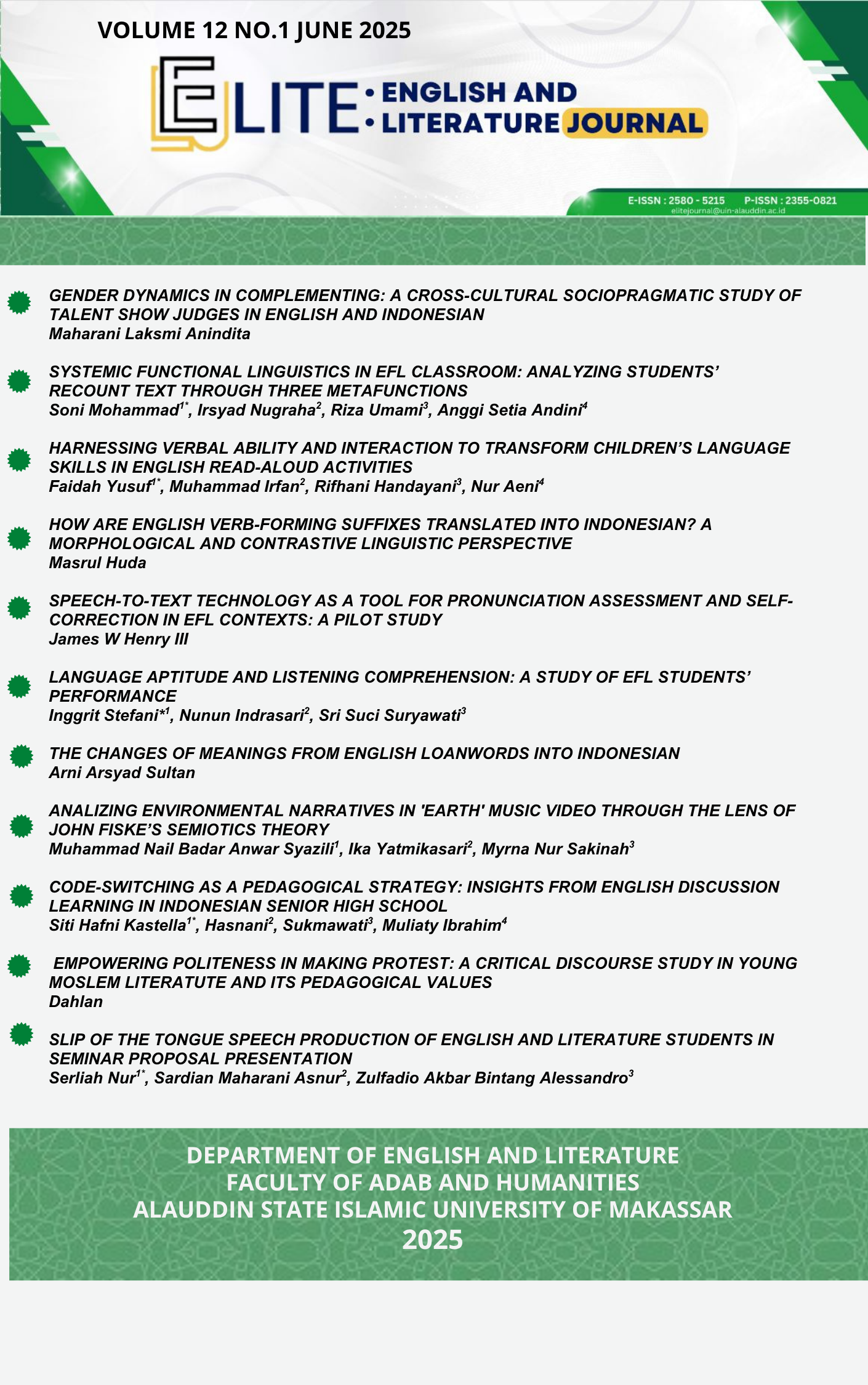LANGUAGE APTITUDE AND LISTENING COMPREHENSION: A STUDY OF EFL STUDENTS’ PERFORMANCE
Keywords:
Language Aptitude; Listening Comprehension; LLAMA Aptitude TestAbstract
The present research investigates the connection between students' language aptitude and their listening comprehension and further examines which specific aptitude components are most closely linked to listening performance. In order to address these objectives, a quantitative correlational design was employed. This research involved seventy-two participants from a Senior High School, selected randomly by clusters to minimize the bias potential. The data were collected through two instrument tests; LLAMA Aptitude Test and Self-made Listening comprehension test that were administered to the participant in two different sessions. The results of those tests were then analyzed by using Spearman’s rho correlation, as the data did not follow a normal distribution. The results from the analysis demonstrated a moderate, yet significant, positive association between language aptitude scores and listening comprehension, with a coefficient of .441. Furthermore, among the four subtests, sound recognition (LLAMA D) and grammatical inference (LLAMA F) showed significant correlations with listening comprehension, while sound symbol recognition (LLAMA E) showed a weak yet still showed significant correlation with listening. However, vocabulary learning (LLAMA B) did not demonstrate a meaningful relationship. These findings suggest that successful listening comprehension relies more heavily on phonological and grammatical processing skills rather than simple vocabulary memorization. The findings offer practical insights for language teaching, emphasizing the need to develop learners' sound processing and grammar inference abilities to improve listening skills.
Downloads
References
Anggraeni, M., Sugiarto, D., & Rasuan, Z. (2023). The Correlation between Listening Strategy and Students’ Listening Achievement. EEdJ: English Education Journal, 3(1 SE-Articles). https://doi.org/10.32923/eedj.v3i1.3452
Artieda, G., & Muñoz, C. (2016). The LLAMA tests and the underlying structure of language aptitude at two levels of foreign language proficiency. Learning and Individual Differences. https://doi.org/10.1016/j.lindif.2016.06.023
Aryadoust, V., Kumaran, Y. I., & Ferdinand, S. (2020). Linguistics. In D. L. Worthington & G. D. Bodie (Eds.), The Handbook of Listening (pp. 139–161). Haboken: John Wiley & Sons, inc.
Bang, S., & Hiver, P. (2016). Investigating the structural relationships of cognitive and affective domains for L2 listening. Asian-Pacific Journal of Second and Foreign Language Education, 1(1), 7. https://doi.org/10.1186/s40862-016-0013-8
Downloads
Published
How to Cite
Issue
Section
License
Copyright (c) 2025 Inggrit Stefani, Nunun Indrasari, Sri Suci Suryawati

This work is licensed under a Creative Commons Attribution-NonCommercial-ShareAlike 4.0 International License.
Once an article was published in the journal, the author(s) are:
granted to the journal right licensed under Creative Commons License Attribution that allows others to share the work with an acknowledgement of the work's authorship.
permitted to publish their work online in third parties as it can lead wider dissemination of the work.
continue to be the copyright owner and allow the journal to publish the article with the CC BY-NC-SA 4.0 license
receiving a DOI (Digital Object Identifier) of the work.













